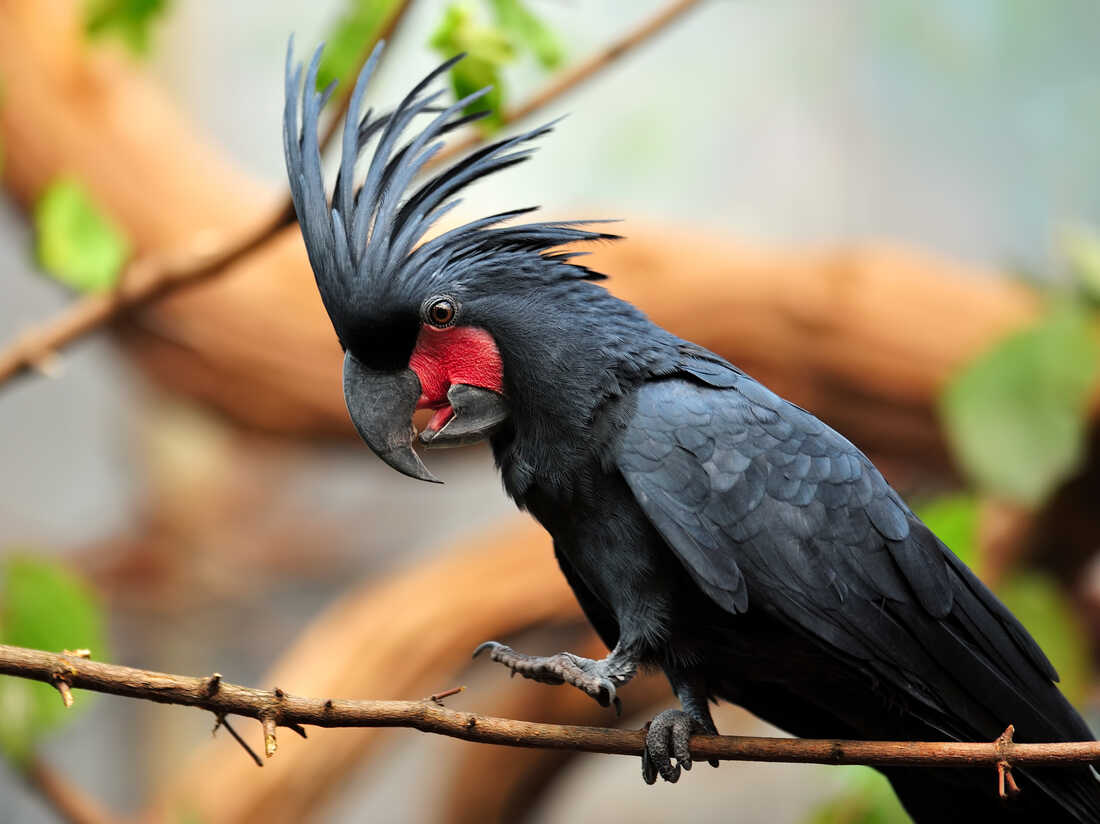To woo a cockatoo, make sure the beat is right
By Regina G. Barber|Maria Godoy|Mary Louise Kelly|Rachel Carlson|Noah Caldwell|Christopher Intagliata|Rebecca Ramirez
Today on the show, All Things Considered co-host joins and for our bi-weekly science roundup. They talk through some of the latest eye-catching science news, including the percussion-intensive mating life of cockatoos, what pink diamonds today tell us about the breakup of the ancient supercontinent Nuna and the latest on the Nipah outbreak in India.
Setting the beat to woo your fellow cockatoo
Scientists have long known cockatoos have rich social lives. But it turns out, those lives are particularly complex — and musically creative — when it comes to courtship.
in the researchers found that male palm cockatoos, a type of parrot, fashion their own unique drumsticks as part of their efforts to woo a potential mate.Wild palm cockatoos live in remote parts of far northern Australia, lowland New Guinea and some offshore islands. Females lay just a single egg every two years. Given this, the females are pretty picky about which male they mate with, says , a conservation biologist at Australian National University and senior author of the study.
Enter the spectacle that is the male palm cockatoo mating display.
The display begins with a string of whistles and calls and a stiffening of the crest on the male's head. "He's blushing his red cheeks and he's bobbing and dancing on the branch, twirling — doing everything he can to get her attention," says , who has spent decades studying the birds in the wild. For the big finale, the males perform a drum solo using a freshly fashioned drumstick.
Credit: Heinsohn, Zdenek, Appleby and Endler, 2023
The birds will walk out on a tree limb and pluck a branch, then use their bills to shape it into a drumstick, all in real-time, as part of the mating display. Heinsohn suspects the males do this to show off their strength to potential mates. He and his colleagues found that each male has a preferred style of drumstick — ranging from the long and skinny to short and stubby. Some even use seed pods.
, an assistant professor of biological sciences at the University of Cincinnati, says the research "provides important new data on tool construction and use" in cockatoos. Hobson studies sociality, behavior and cognition in birds and was not involved in the current study.She says it's extremely difficult to get good data on complex behaviors in parrots in the wild, "so it's really exciting that these tool behaviors were so carefully documented in a wild population. And I think it makes it more likely that these behaviors are really serving a real biological purpose, rather than being something like an artifact of captivity."
The ancient, massive breakup that spewed pink diamonds
For decades, the Argyle diamond mine in Western Australia enjoyed a bounty of pink diamonds. Until it closed in 2020, Argyle was the leading global supplier of the material. But the whole time, geologists have been stumped by how the diamonds got there and when.
Geologists do know the broad strokes of how diamonds are created. They form around 150 km below the Earth's surface. Historically, they formed billions of years ago, with the formation of supercontinents. Colorless diamonds form when pure carbon is under extreme pressure. By contrast, pink diamonds are says , a geologist at Curtin University.

Selected octahedral pink diamonds that were found in the Argyle diamond mine. Murray Rayner hide caption
toggle caption Murray Rayner"You can actually take that diamond and twist and bend it a little. Like if you bend it and twist it just the right amount, it turns pink," he explains.
When the structures inside the diamond get compressed, the light traveling through the diamond makes it look pink.
Scientists think these pink diamonds were created during the formation of a supercontinent called Nuna, 1.8 billion years ago.
This week, Olierook and his colleagues published their finding that the pink diamonds spewed from deep inside the earth some 500 million years after the formation of Nuna in the journal
In humans, Nipah can cause severe respiratory problems and , which can bring fevers, headaches—and even disorientation or coma.
Scientists aren't yet sure how the current outbreak in Kerala started. But they do know the virus jumps from animals to people. Fruit bats are thought to be the primary hosts, spreading Nipah to humans after contaminating things people eat or drink. In previous outbreaks in Bangladesh, scientists think fruit bats drank the sap of date palm trees, and people contracted the virus after drinking the sap. From there, the virus can be transmitted from human to human through direct contact with the bodily fluids of an infected person or infected food. It is not airborne.
Researchers think several of the cases that spread humans are linked to a hospital where the first person who died during the outbreak sought treatment.
While Nipah is a deadly virus—it can have a fatality rate as high as 75%—doctors in Kerala say they're optimistic about the trajectory of the current outbreak. After identifying the first case, health authorities created dozens of containment zones, closed some schools and public transit networks and isolated health workers. No other states have reported any cases, so Kerala has begun to ease up on those restrictions.
—



